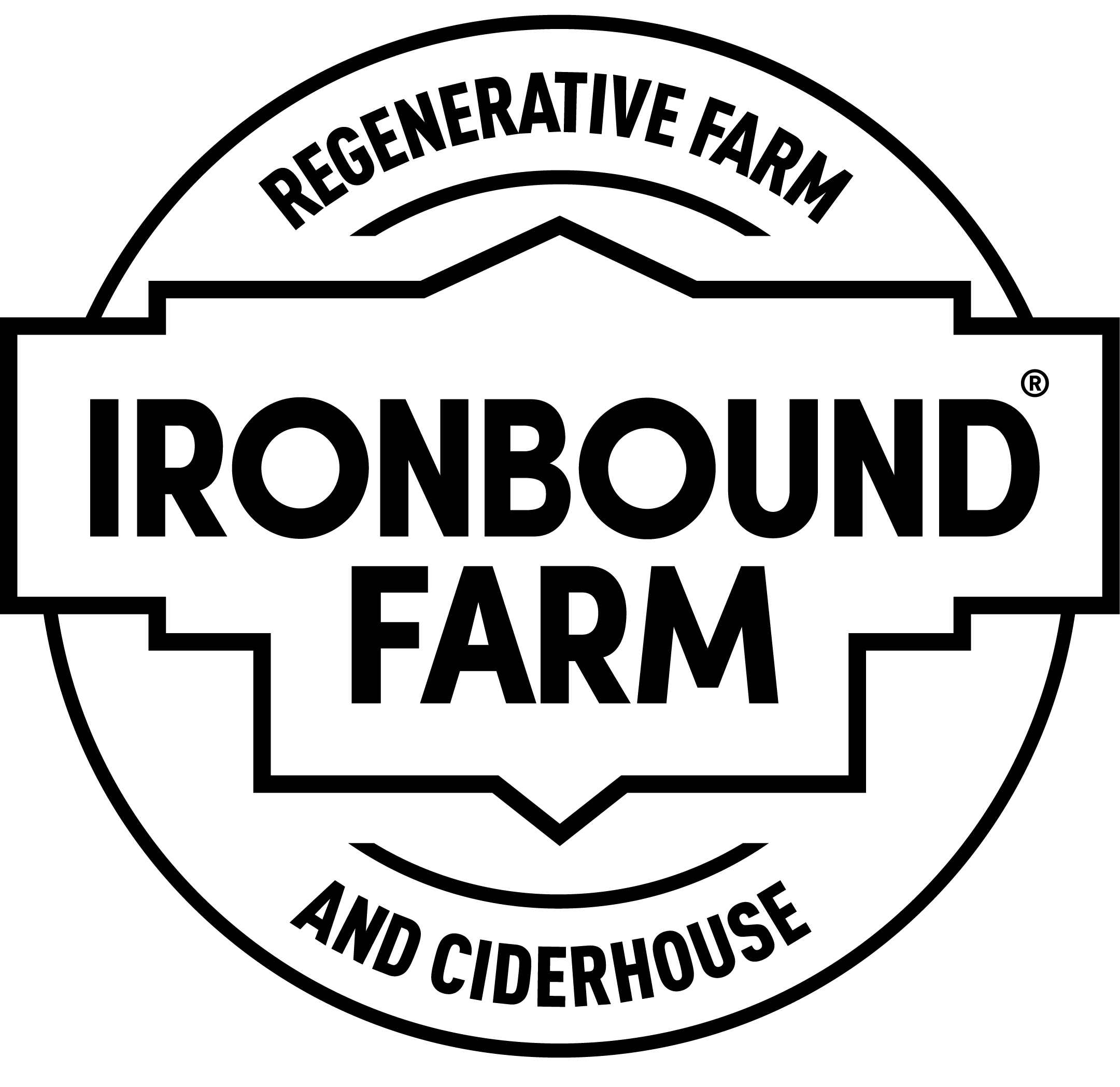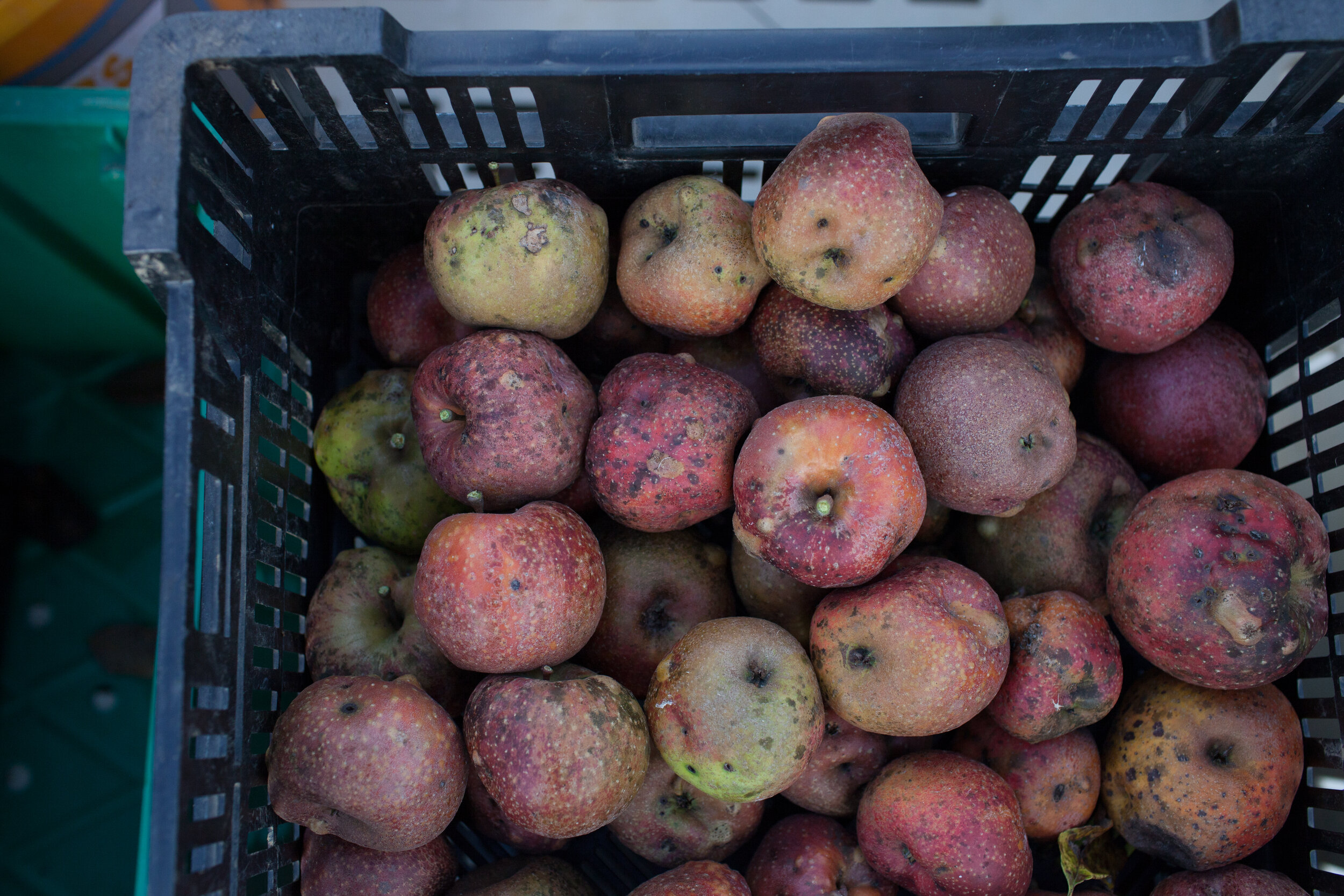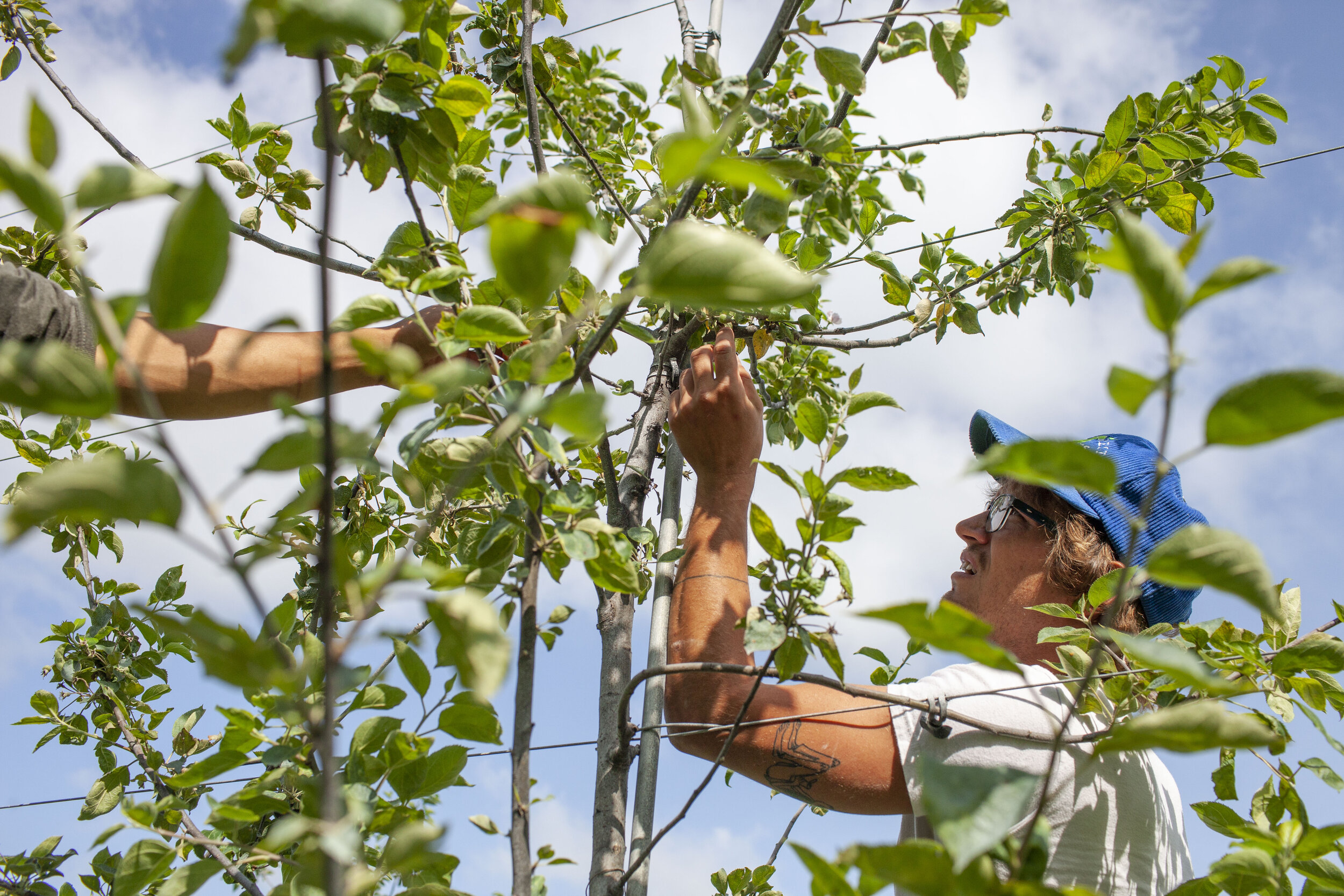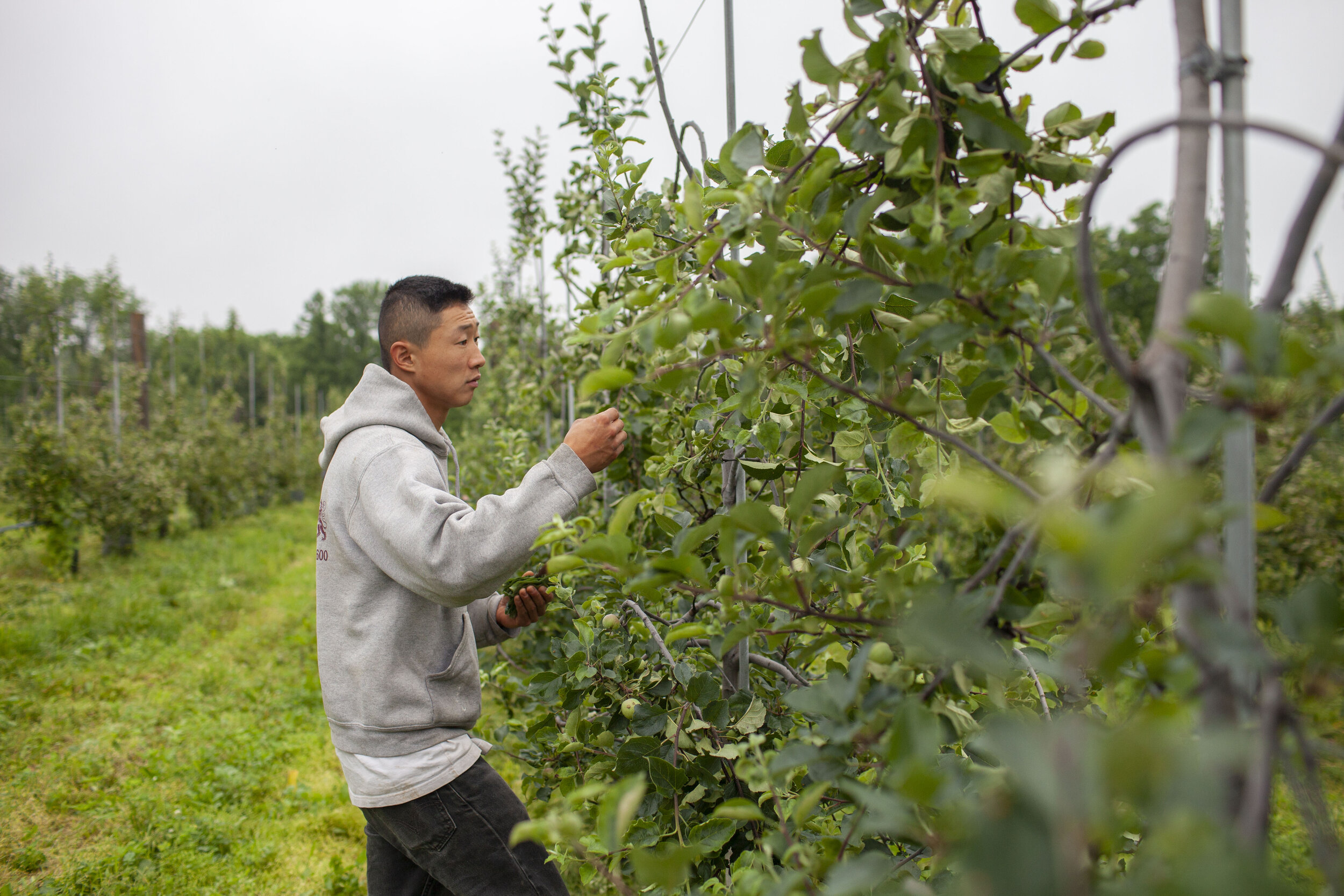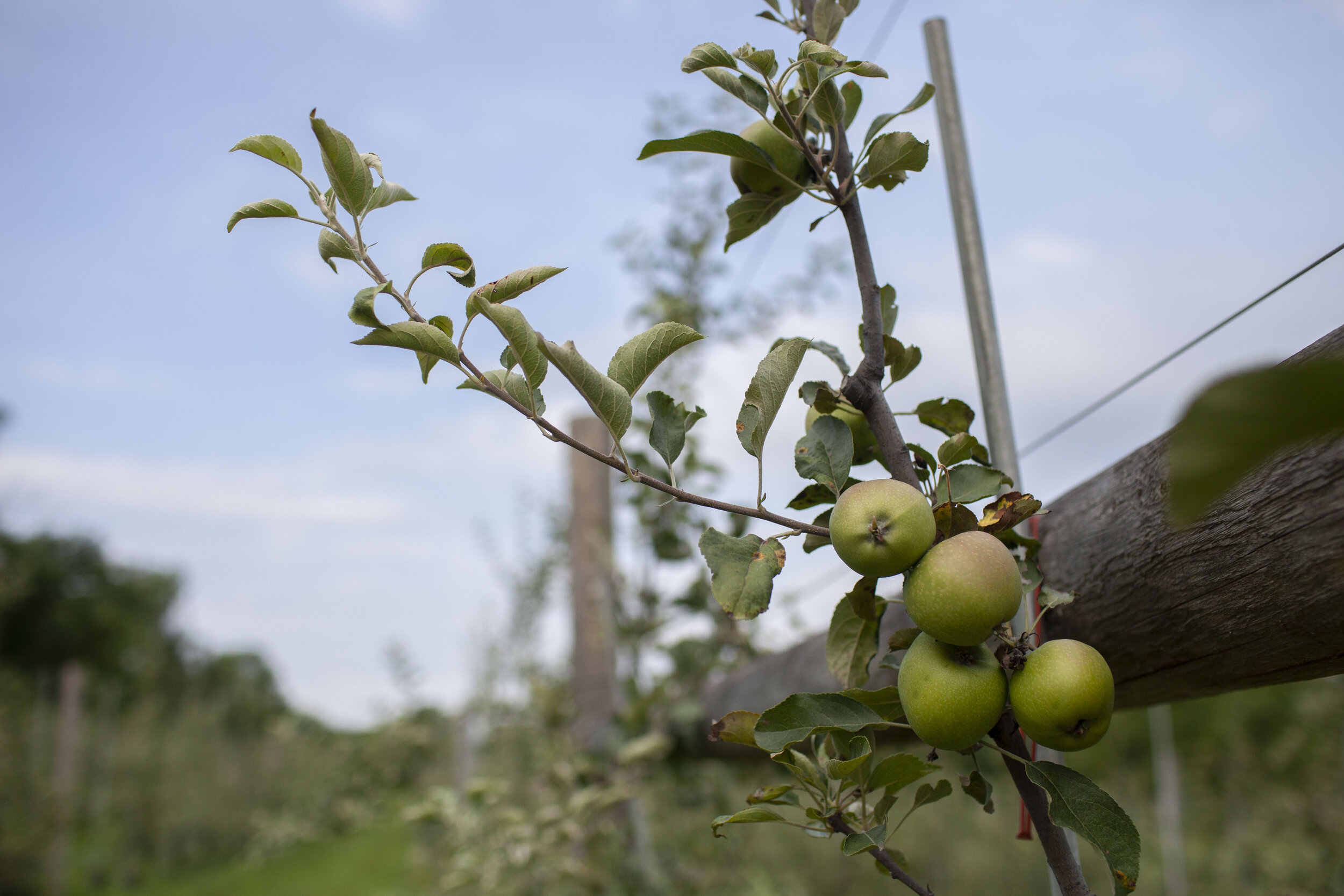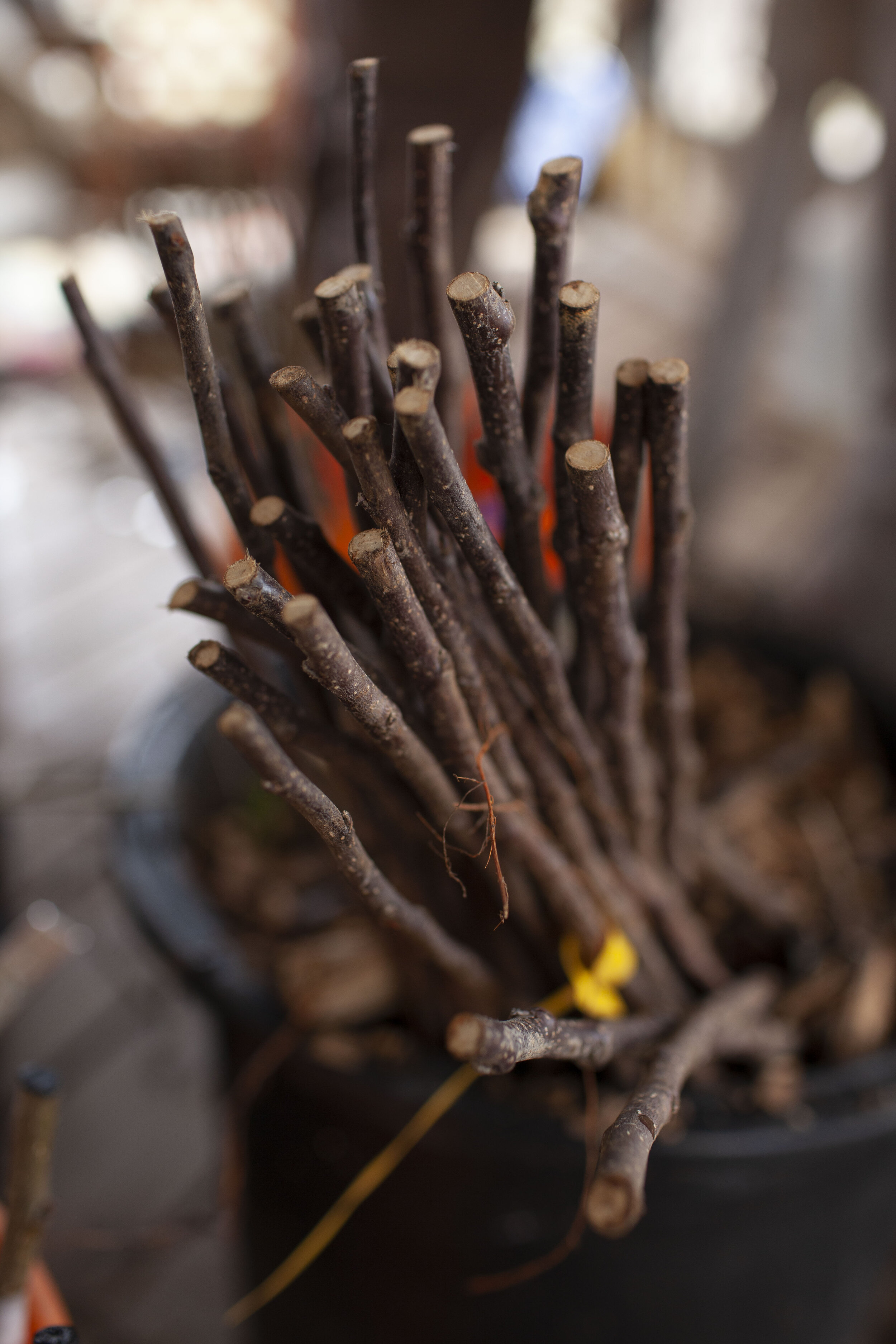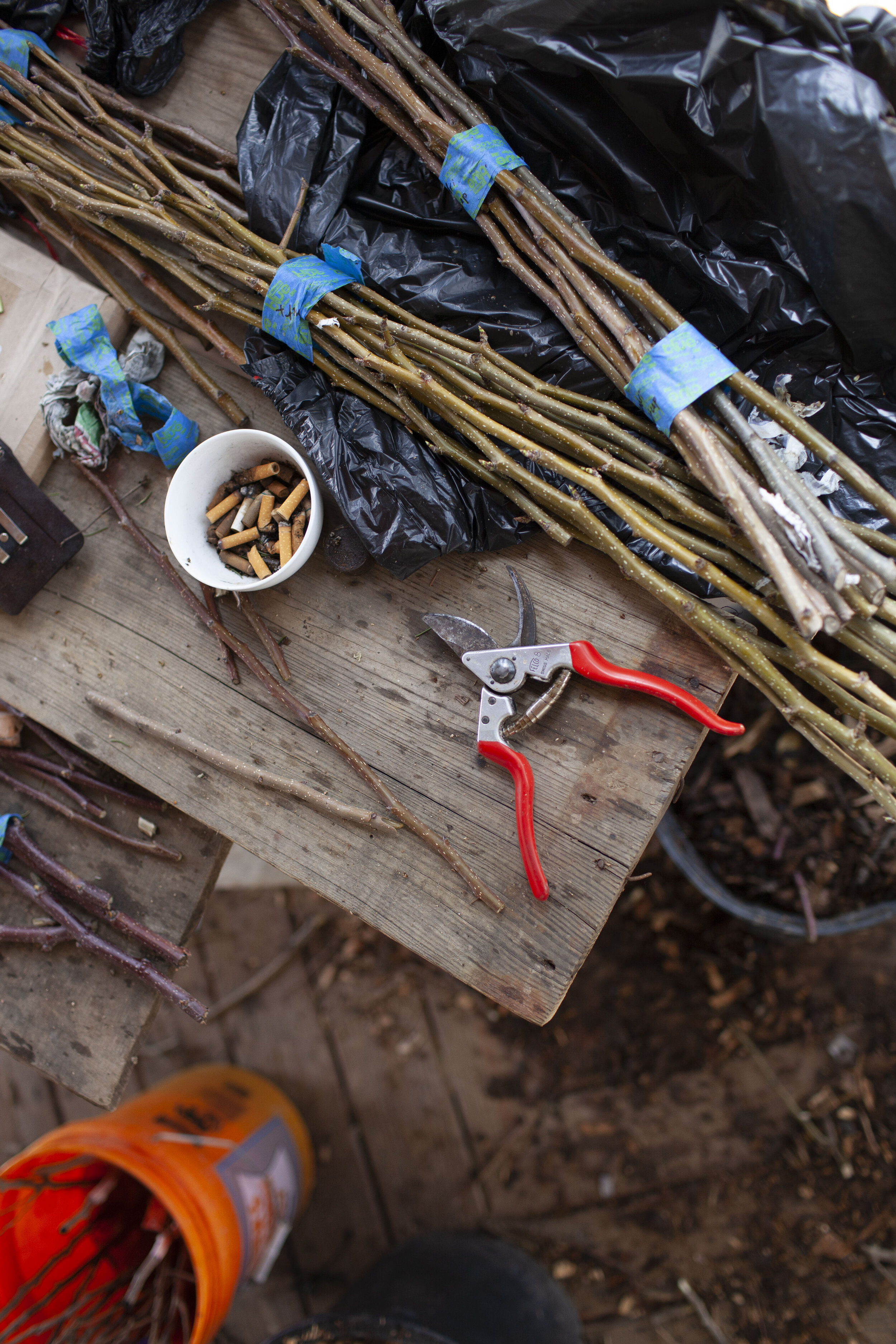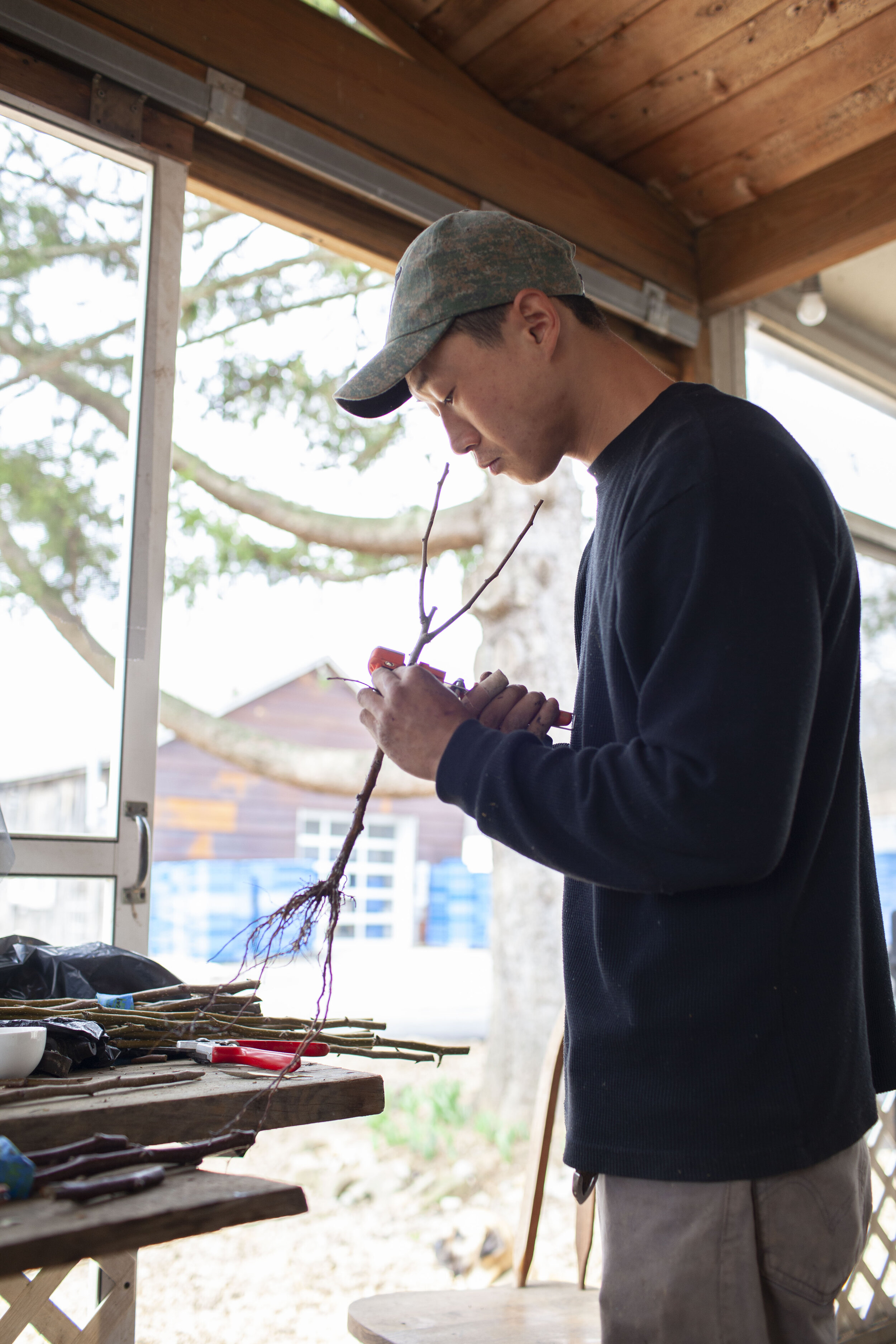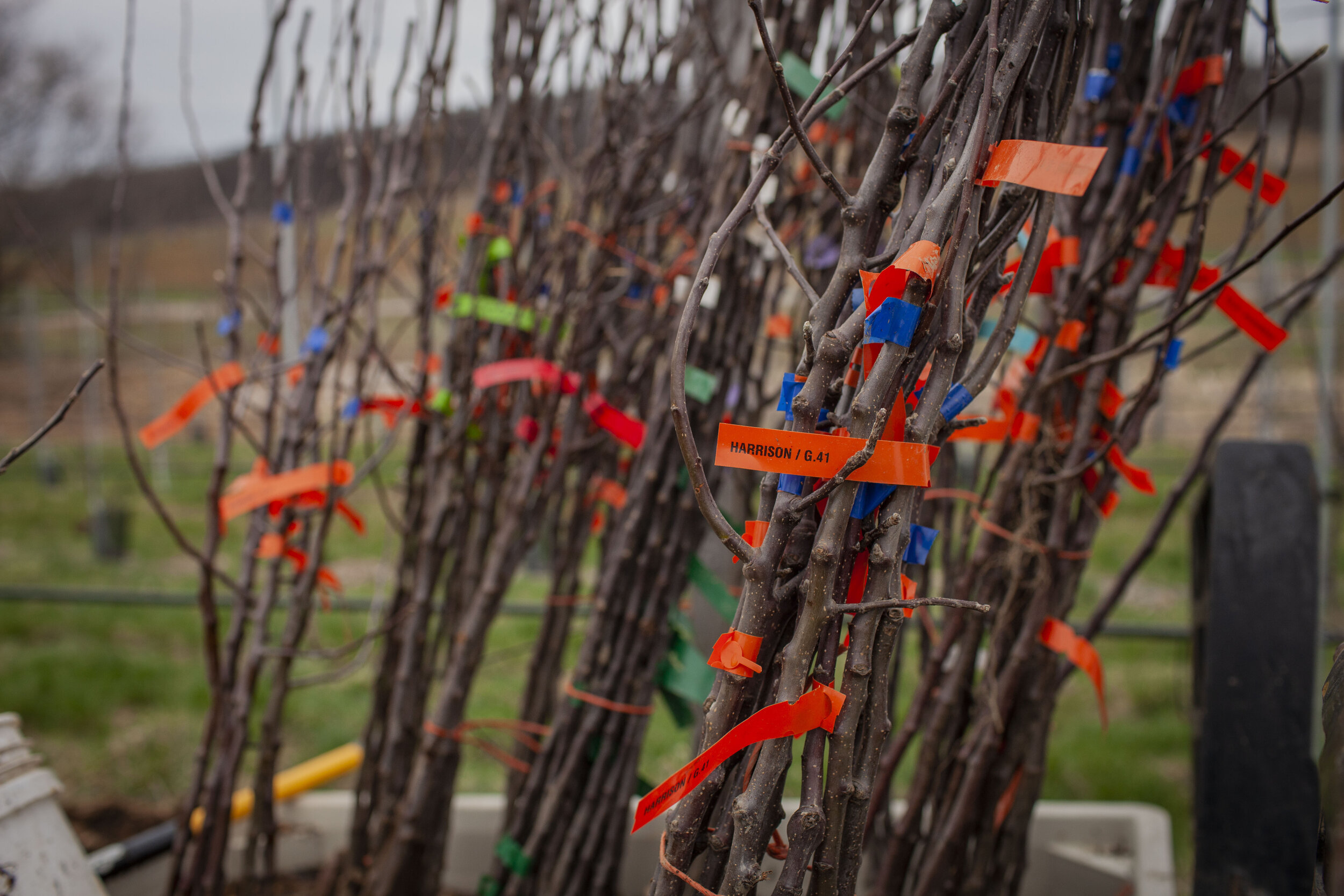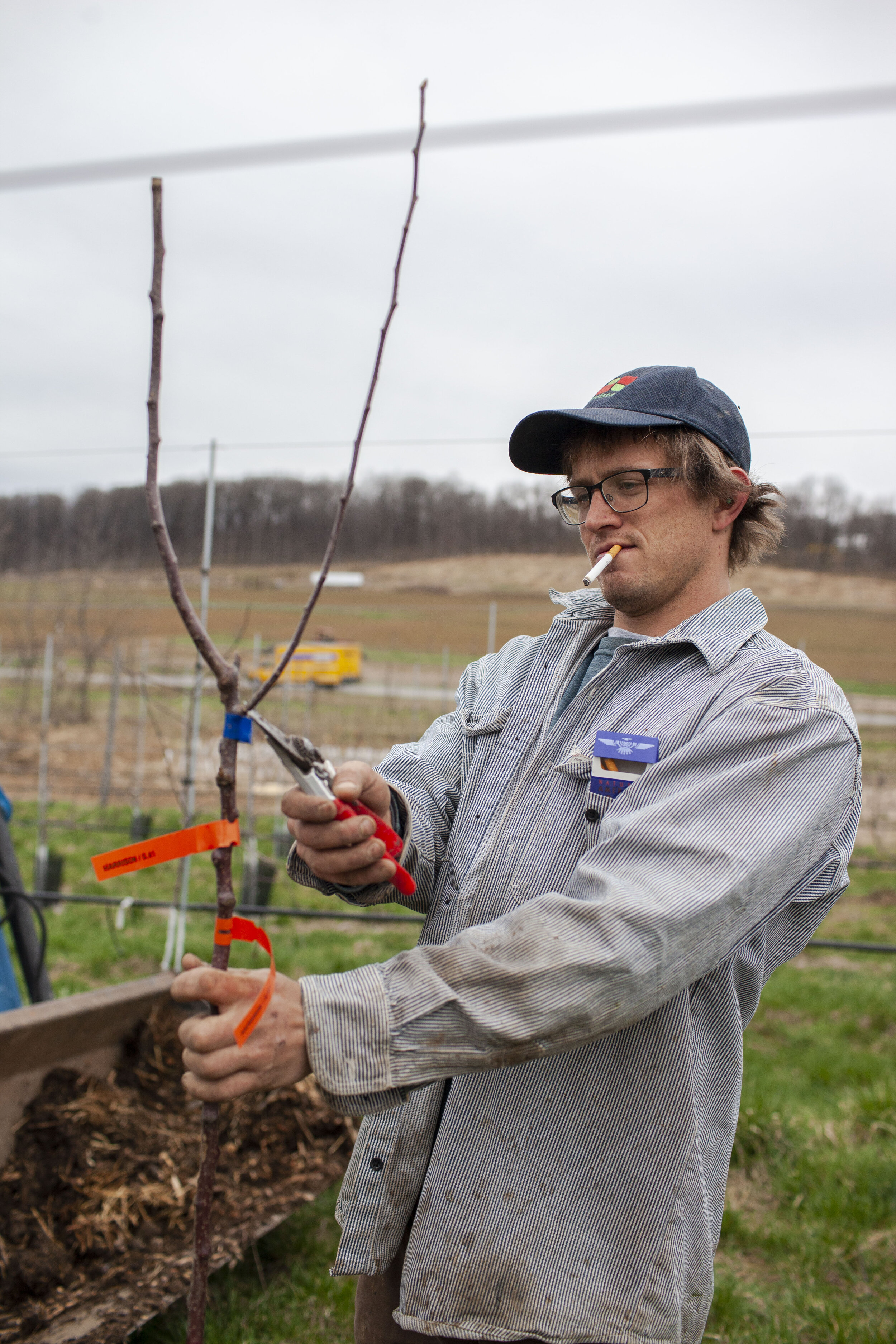BRINGING BACK THE HARRISON APPLE AND NEWARK CIDER
THE HISTORY OF OUR ORCHARD
In the orchard at Ironbound Farm, we've planted the three most important heirloom varieties of Newark cider apples — the Harrison, Canfield, and Graniwinkle. Planting these old apple varieties reintroduces flavors that were lost during our nation's half-century-long love affair with sweet apples. And, like the preservation of important examples of early American architecture, it keeps alive a significant piece of New Jersey heritage. Planting old varieties also helps maintain genetic diversity in apples, which is crucial to creating resilience within apple orchards and markets.
Our young orchard is our testing ground where we are learning how 18th century apple varieties respond to ecological farming practices, varying soil types, and different densities of planting. We are also experimenting with how these old varieties perform on different rootstocks, which regulate the size of the mature tree, the age of first fruiting, the lifespan of the tree, and its ability to endure extreme weather events. Our goal is to determine which combination of management practices, soil type, and rootstock yield the most flavorful fruit and resilient trees.
Our original orchard planting includes a block of trees grafted onto rootstock that produces a short (dwarf) tree that can be attached to a trellis. This allows us to plant 600 to 700 trees per acre. These trees bear fruit years earlier than large trees and their apples are much easier to pick. However, there are trade-offs. Trellising is a very expensive way to grow trees, they require irrigation, and the trees don't live as long as full-sized trees.
We also planted a heritage block, where the trees will reach 15 to 20 feet at maturity. These trees are planted at 120 trees per acre. They take longer to first bear fruit and are harder to harvest. But, they live much longer than trellised trees, don't need irrigation, and are better able to withstand adverse weather.
GOING THE HARD ROUTE
In choosing to manage our orchard using the principals of regenerative farming, we set ourselves on a long and difficult path. When we purchased Ironbound Farm in the late winter of 2015, our land laid buried under a thick blanket of snow. With the arrival of spring, we discovered that the soil had been deeply damaged by years of mismanagement and neglect. The land needed serious healing to rebuild fertility and improve soil structure.
That healing would take years of work, but we had already ordered thousands of young apple trees. So, ignoring the advice of wiser, more experienced orchardists, we went ahead and planted about 8,000 apple trees. Three years later, we removed almost our entire heritage block because the trees were struggling and failing to flourish. Although costly, we felt this was a necessary step to ensure the future long-term health of our orchard.
Our trees were in distress because we had not set them up for success by first creating the conditions that would allow them to thrive. In a conventionally managed orchard, we might have tried to mitigate the damage by spraying our trees with pesticides to fight disease and using herbicides to kill the mugwort that was robbing them of nutrients. But, in regenerative agriculture disease and predation are seen as the sign of a system that is out of balance. Rather than attacking these symptoms with a war-on-nature mentality, we are working to bring the system back into balance — knowing that giving our trees the resources they need to be strong and healthy is the best defense against the destructive forces that are ever present in the environment.
This means that we’ve spent the last two years cover cropping our land to reintroduce depleted nutrients to the soil, planting wild flower meadows to attract a wide range of beneficial insects, and building a system of berms and swales to address storm water runoff and soil erosion — all in preparation for welcoming the new trees that will replace the ones we removed.
Fortunately, our trellised trees are thriving and have begun to bear fruit. This means that we will soon be producing a limited release of heritage ciders using Newark's most beloved cider apples.
LEARN ABOUT OUR CIDER APPLES.
REGENERATIVE PRACTICES IN ORCHARDING
In the world of apples, there are two conflicting ideas about the right way to manage an orchard. The first approach is an input-intensive system that relies on manufactured fertilizers to promote growth and pesticides to control insects and disease. The second focuses on building the orchard's capacity for self-renewal through soil-borne fertility — a slow, intricate dance in which the diverse, complex community of life within the soil lives in symbiotic relationship with the tree, each providing the other with the nutrients necessary to thrive.
This second, biologically driven philosophy is known as regenerative agriculture — and this is the philosophy we follow in the orchard at Ironbound Farm. This means we aim to maximize our use of nature's goods and services while minimizing the damage that we do to our soil, and, by extension, to our land and our community. Building biologically active soil is the foundation of our farming strategy and every management decision we make on the farm must take into account the optimal health of the soil, plants, animals, and people.
Growing apples and making cider are not new occupations in Hunterdon County. Two hundred years ago, Hunterdon farmers were making a lot of cider, which they either drank on the farm or turned into apple cider vinegar and brandy. In 1819 alone, over 170,000 bushels of apples were used to make brandy in Hunterdon County. Much of that brandy was sold to local taverns such as Hickory Tavern, which, for almost a century, sat just up the hill from our farm.
In Rural Hunterdon, the late Hubert Schmidt, professor of history at Rutgers-Newark, explained that Hunterdon's farmers turned to growing apples for brandy, in part, because they had destroyed their fields. "The increased production of corn and wheat combined with lack of knowledge of the nature of the soil led to land exhaustion," he wrote. ”By the end of the eighteenth century, the dire effects of poor crop practices were very noticeable.”
From the dead zone in the Gulf of Mexico to the rapid loss of topsoil, the environmental impact of poor farming practices are still visible today. Multinational agro-chemical-seed giants try to fix those problems with new products and technologies, like stronger pesticides and genetic engineering. This is NOT working.
So, we’ve chosen a radically different approach to enhancing the environmental impact of our agricultural activity at Ironbound Farm. Instead of looking to industry for answers, we look at how nature works in order to figure out the best way to manage our farm. Rather than force-feeding plants with synthetic fertilizers to increase their output, we encourage an abundant diversity of life in our soil. Those soil organisms, in turn, give our trees access to all the minerals and nutrients they need to thrive.
Above ground, we seed our orchard floor with plants that attract beneficial insects to help with pollination and pest control. We figure that if our trees have what they need, they'll be able to produce tasty, nutritious, abundant fruit. And, instead of sucking the life out of our soil, this kind of farming actually heals the land — making our farm healthier and more productive over time. It also creates a much safer, healthier work environment for our crew.
New Jersey's orchards are plagued by every known apple disease and pest. It’s a huge leap of faith for us to count on good management, plus abundant soil life, to make our trees so healthy that disease and pests can’t get a foothold. But for the sake of our farm and our community, that's a leap we're happy to take.
